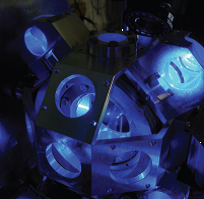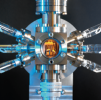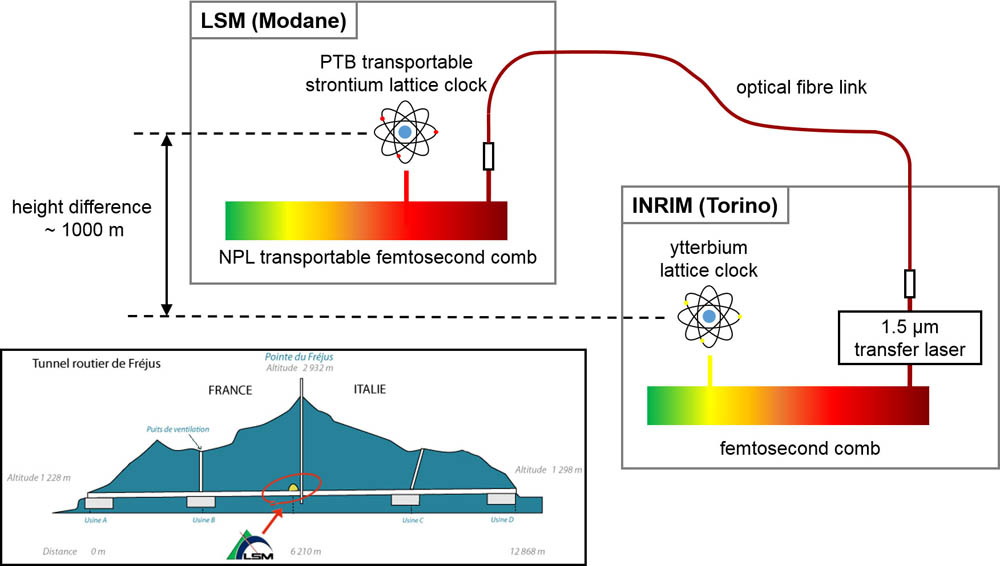WP4 Proof-of-principle relativistic geodesy experiment
Workpackage leader: Dr Davide Calonico, INRIM
Other participants: CMI, NPL, OBSPARIS, PTB, LUH, CNRS, UPMC
The aim of this workpackage was to perform a proof-of-principle relativistic geodesy experiment demonstrating that optical clocks can be used to measure gravity potential differences over medium-long baselines with high temporal resolution. In contrast to other instruments used for gravity measurements, optical clocks are directly sensitive to the gravity potential, which determines their gravitational redshift.
The concept of the experiment was to compare two optical clocks, as illustrated above. The first optical clock was the ytterbium optical lattice clock at INRIM in Turin, Italy. The second was the transportable strontium optical lattice clock from PTB, which in February 2016 was taken to the Laboratoire Souterrain de Modane (LSM) in the Fréjus tunnel, close to the France-Italy border. The frequency comparison between these two clocks was carried out using a 150 km coherent optical fibre link between the two laboratories. Two optical frequency combs were also required for the frequency ratio measurement between the two optical clocks, because the transmission window of the optical fibre link is at 1.5 µm. Since no frequency comb was available at LSM, a transportable comb from NPL was used to link the frequency of the clock laser for the transportable lattice clock to that of a 1.5 µm transfer laser. Because the two clocks are based on different transitions, the proper frequency ratio between them must also be determined by subsequently transferring the PTB transportable lattice clock to INRIM.
This INRIM-LSM test-bed offers a large gravity potential difference, with a height difference of approximately 1000 m between the two sites. The expected gravitational redshift is therefore about 10-13. The gravity potential difference between the two sites was determined using standard geodetic methods in 2015 by LUH in collaboration with INRIM and the Politecnico di Torino, giving a value that can be compared with the one obtained using the clocks. The LSM laboratory is an interesting location to make such measurements from a geodetic point of view: firstly it is located under a mountain in the middle of the Fréjus tunnel, and secondly the area exhibits long-term subsidence meaning that the gravity potential will change over time.
The environmental conditions at LSM are very different from those of a typical optical clock laboratory in a national measurement institute. In particular, the underground laboratory is subject to relatively large temperature fluctuations and high background acoustic noise levels. Operating the transportable strontium optical lattice clock under these conditions proved to be technically very challenging, but was eventually achieved for a few hours on two days in the middle of March 2016. However, this period of successful operation coincided with a failure of one of the lasers for the 171Yb lattice clock at INRIM, meaning that a direct comparison of the two optical clocks was not possible. Instead, the frequency of the transportable strontium lattice clock was measured against the INRIM caesium fountain primary frequency standard, which was running throughout the entire campaign. By using an INRIM hydrogen maser as a flywheel to bridge gaps in the optical clock operation, an uncertainty at the 10-15 level was achieved for the remote frequency comparison. The gravity potential deduced from the remote clock comparison is consistent with the value obtained using conventional geodetic methods.
The proof-of-principle experiment carried out within our project has demonstrated that optical clocks can be used to make direct measurements of the Earth's gravity potential, and there are excellent prospects for improving the accuracy achieved in our initial experiment by orders of magnitude as the reliability and robustness of transportable optical clocks improves.

The research within this EURAMET joint research project receives funding from the European Community's Seventh Framework Programme, ERA-NET Plus, under Grant Agreement No. 217257.


